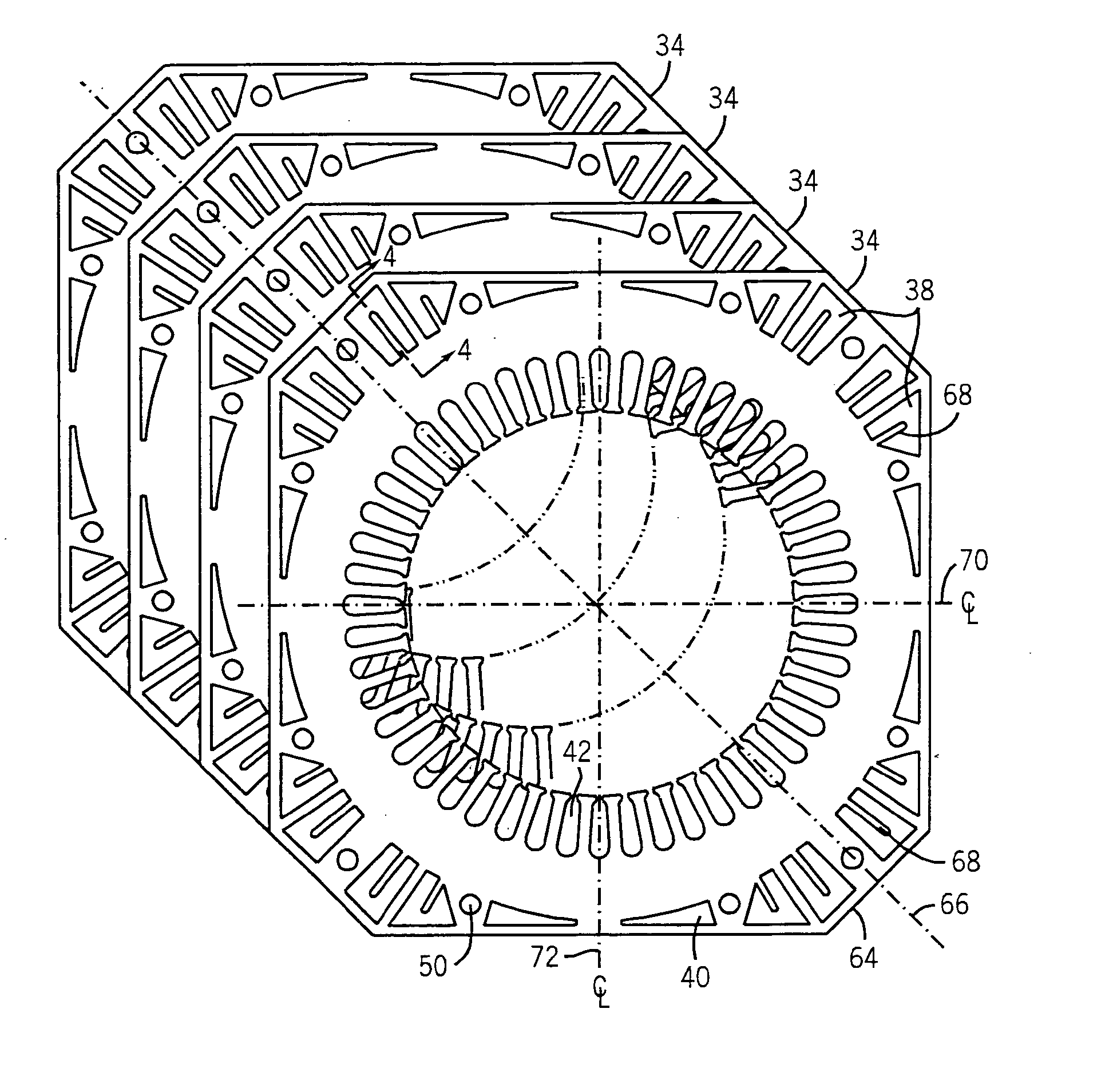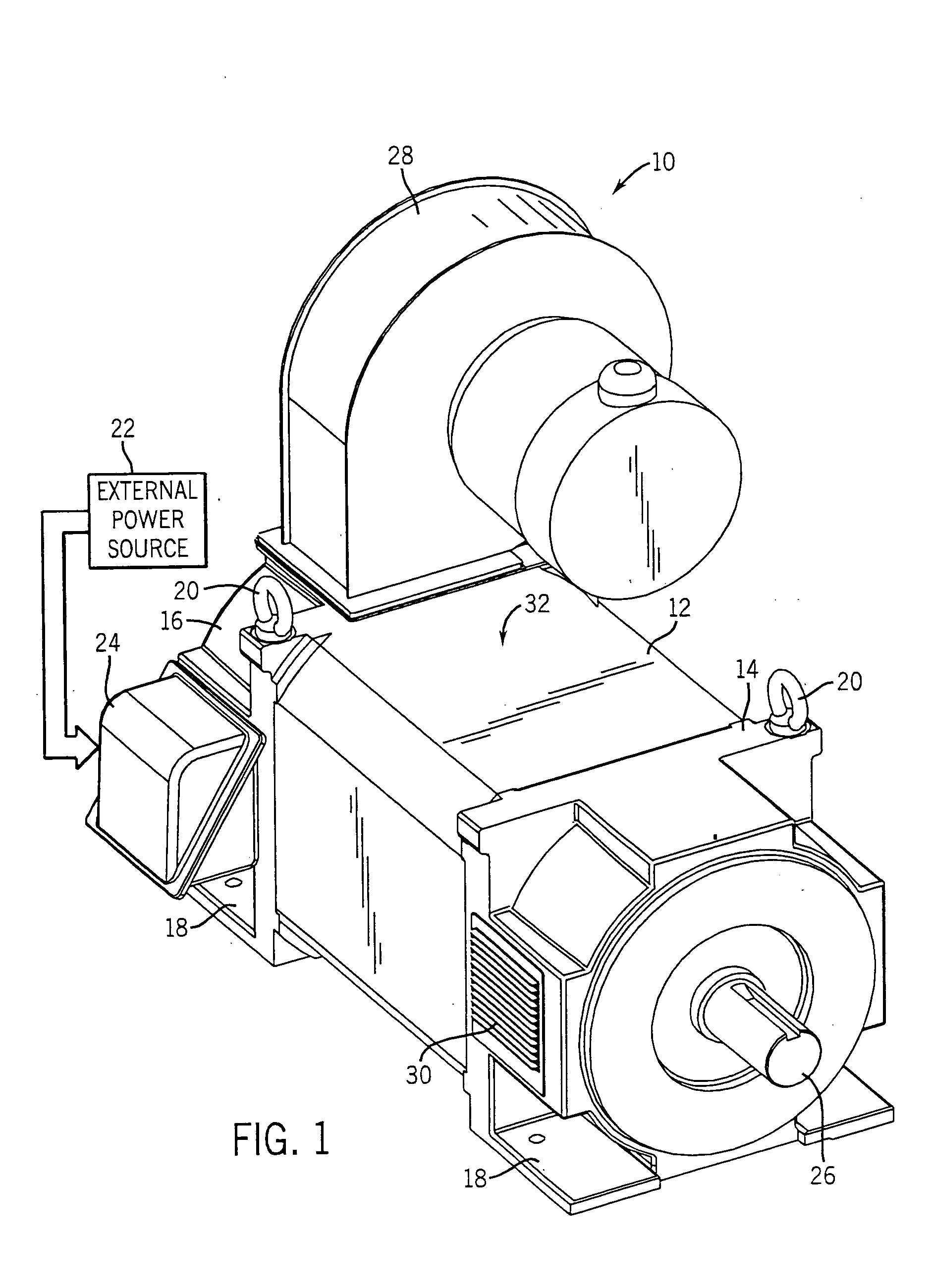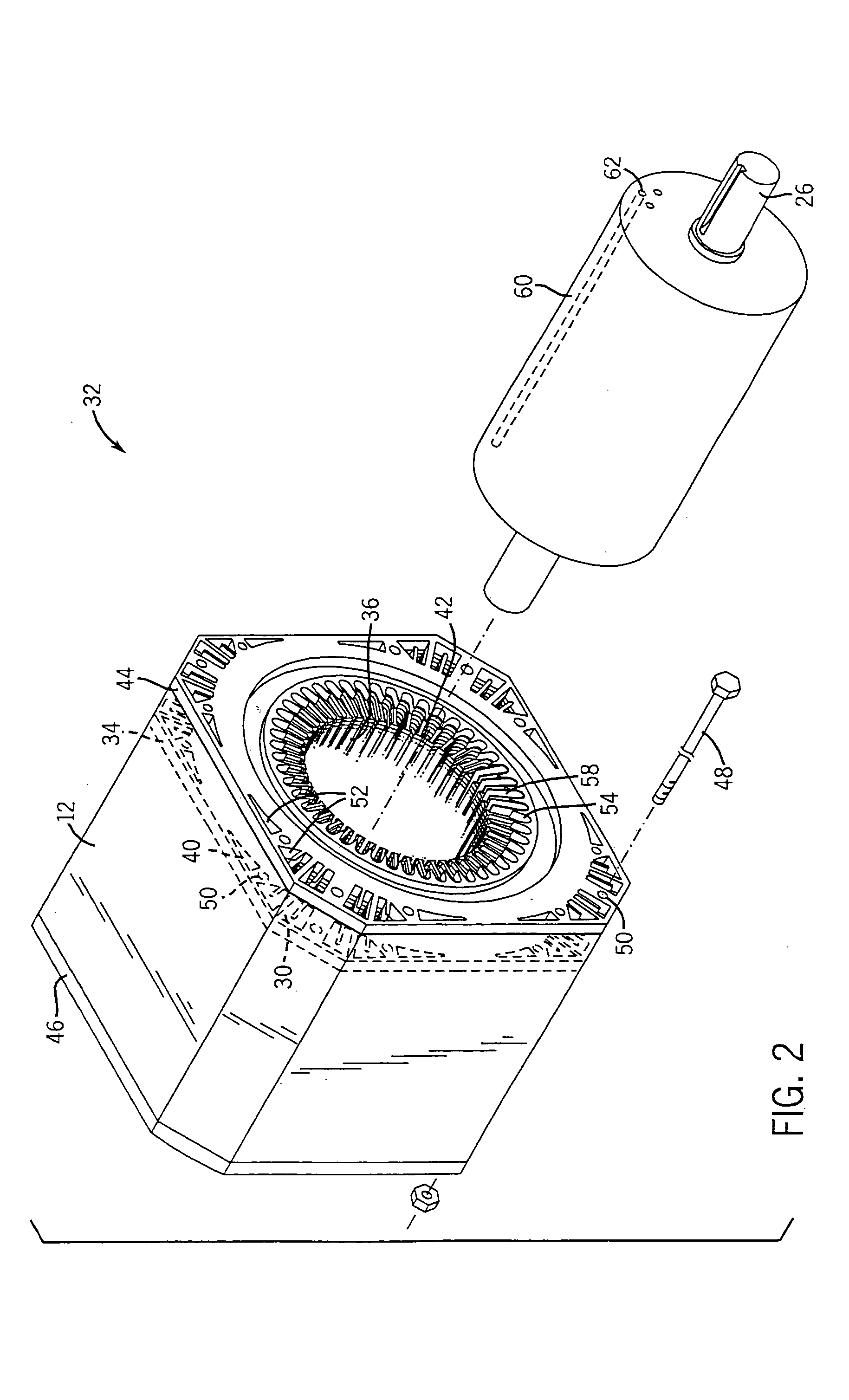Stator cooling method and apparatus
a technology for electric motors and cooling methods, applied in the direction of windings, magnetic circuit rotating parts, magnetic circuit shapes/forms/constructions, etc., can solve the problems of system downtime, degrade the performance of the motor, and heat produced by the physical interaction of the various moving parts of the motor, so as to achieve efficient cooling of the motor
- Summary
- Abstract
- Description
- Claims
- Application Information
AI Technical Summary
Benefits of technology
Problems solved by technology
Method used
Image
Examples
Embodiment Construction
[0017] Turning to the drawings and referring first to FIG. 1, an exemplary electric motor 10 is shown. In the embodiment illustrated, the motor 10 is an induction motor housed in a conventional NEMA enclosure, which is generally employed in industrial settings. Although the present technique is described in relation to an industrial application, it may also be applied to any number of modalities, such as, commercial and residential applications. The motor 10 comprises a frame housing 12 capped at each end by front and rear end-caps 14 and 16, respectively. The frame housing 12 presents a generally square cross section having chamfered corners to conform with the shape of the individual laminations (see FIG. 2) disposed therein. Advantageously, the end-plates 14 and 16 may include mounting and transportation features, such as mounting flanges 18 and eyehooks 20. The frame housing 12 working with the front and rear end-caps 14 and 16, form a protective shell for a stator and a rotor (...
PUM
 Login to View More
Login to View More Abstract
Description
Claims
Application Information
 Login to View More
Login to View More - R&D
- Intellectual Property
- Life Sciences
- Materials
- Tech Scout
- Unparalleled Data Quality
- Higher Quality Content
- 60% Fewer Hallucinations
Browse by: Latest US Patents, China's latest patents, Technical Efficacy Thesaurus, Application Domain, Technology Topic, Popular Technical Reports.
© 2025 PatSnap. All rights reserved.Legal|Privacy policy|Modern Slavery Act Transparency Statement|Sitemap|About US| Contact US: help@patsnap.com



